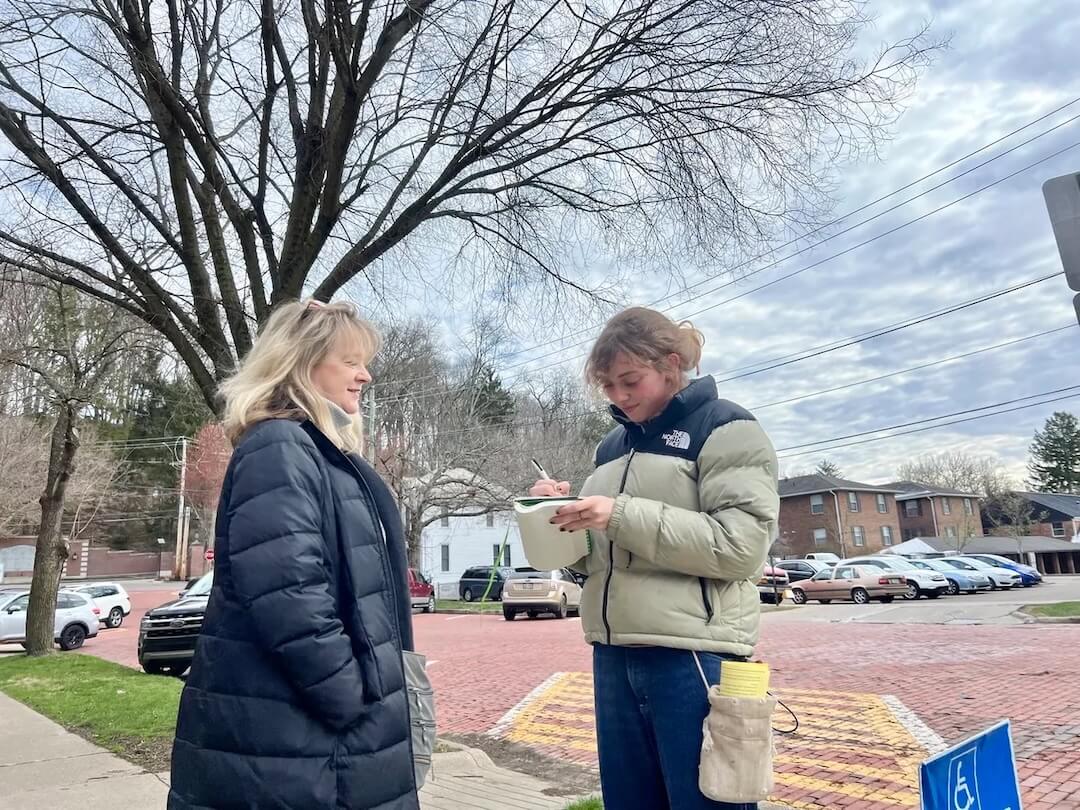Salma Loum has covered sexual assault and domestic violence since her time at Stanford University, where she earned a master’s degree in journalism. When she speaks with survivors of sexual assault and advocates, a question emerges: What is the first thing you do after a sexual assault?
“Almost exclusively, it’s, ‘We Google what to do’ or, ‘We just go online and figure out what our next steps are’ when they reach that moment,” Loum said.
Searching online for what to do after a sexual assault produces a lot of laws and complicated, dense information that is hard to follow, Loum said. Resources are also difficult to find.
So Loum, a data journalist and member of the 2021-2022 Los Angeles Times Fellowship class, set out to create a guide for navigating the steps to take after a sexual assault. The result is an interactive project published late last month by the Los Angeles Times with support from the newspaper’s Utility Journalism Team.
The lede states that sexual assault is a common yet underreported crime. “If you or someone you know has experienced the trauma of sexual assault, the steps that follow — exams, kits, police, prosecutors — can be confusing and difficult,” Loum writes. “Whether the assault was in the last 48 hours or many years ago, this guide will help you or a loved one understand and navigate the process.”
She notes to the reader that their answers will not be tracked or saved. The first question is: Did you experience sexual assault? The answer choices are “Yes” or “No, but I know someone who did.” If you click “Yes,” the next question is, “Are you safe?” If you click the second choice, Loum offers tips on how family members can help, such as showing support by driving the survivor to an exam, therapy sessions or court dates.
“I wanted to create this place where people would have agency over what they want to do, because every survivor is different,” Loum said. “Not everyone wants to go to the police right away. Not everyone is ready to talk about trauma that they’ve experienced. Not everyone is ready to seek mental health (services) right away.”
As part of the one-year Los Angeles Times Fellowship, fellows are rotated across the newsroom to work on different projects. Loum is destined for the data and graphics department, where Sean Greene — who helped with this project — is an assistant editor. Greene said Loum started with the Utility Journalism team, where she pitched this project to her editor, Matthew Ballinger. Ballinger greenlit it. A note at the bottom of the guide shows a team helped bring it to life.
Greene said the format used for Loum’s guide is called a decision tree. He said the Los Angeles Times first used the tree in a guide to help readers figure out their booster vaccine eligibility, back when those rules were confusing.
“Salma and Phi (Phi Do, a data and graphics journalist) very wisely recognized this was a great format for guiding survivors of sexual assault through what I can only imagine is a really difficult information ecosystem,” Greene said. “So putting everything in one place, walking people through it … it doesn’t walk them down any path they don’t want to go, which I really appreciated, too. That was really smart and made it a really powerful use of this decision tree format.”
The project also features video clips. For example, you hear a therapist talk about who is there to help the survivor during a forensic medical exam, and the senior director of the UCLA Rape Treatment Center talk about survivors’ rights during sexual assault forensic exams.
Another question asks: Do you want to involve law enforcement?
If you click “no,” the project lists resources for survivors, including Los Angeles-area crisis shelters.
From idea to fruition, Loum said it took her about seven weeks. The project was also translated into Spanish, which Greene said expanded the potential audience. Both Loum and Greene said the response to the project has been very positive — including from sources Loum interviewed in the past.
When it came to which resources to draw from or include, Loum said it was important for her to be as unintimidating as possible and to use clear and concise information.
“The biggest parts of this process were mental health support, the forensic exam, law enforcement, and then if your case will be used in court. These are the four pieces that I believe were the biggest elements for this process to come through,” she said. “From former interviews and talking to sources, I felt like these were the four main elements that could be the most helpful.”
In coming up with the questions for the user, Loum said she wanted it to feel like the Los Angeles Times was talking directly to them. When interviewing sources, she made sure to ask them to respond using the “you” format.
“A lot of my sources answered questions in a way where they’re directing their advice on what to do directly to the user,” she said. “I felt that, again, it’s a powerful way to give the user agency over their process and how they’re going to go through it.”






